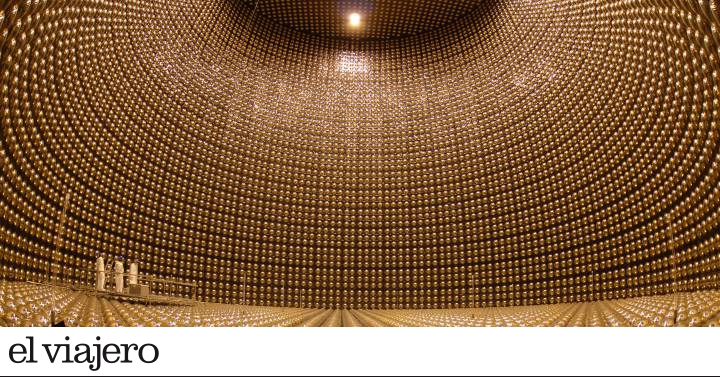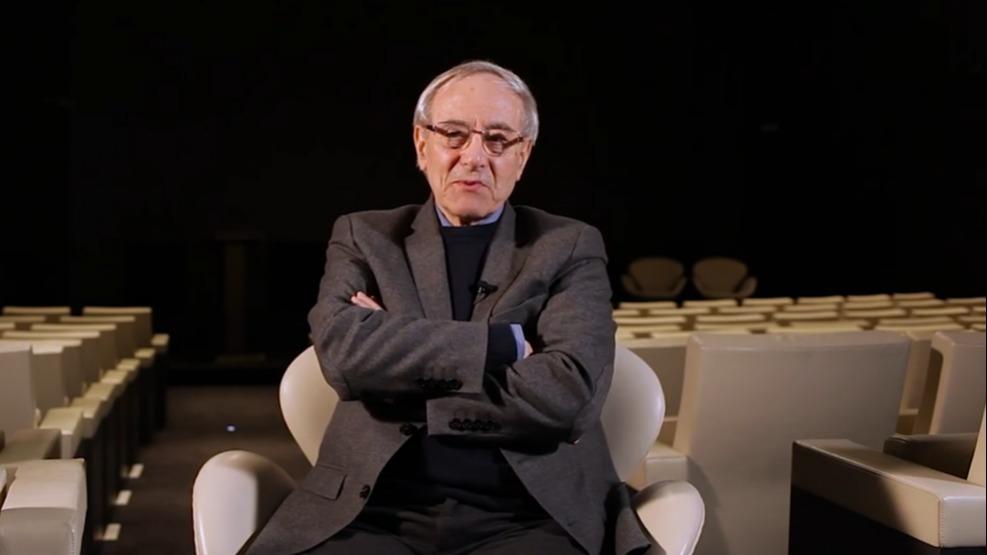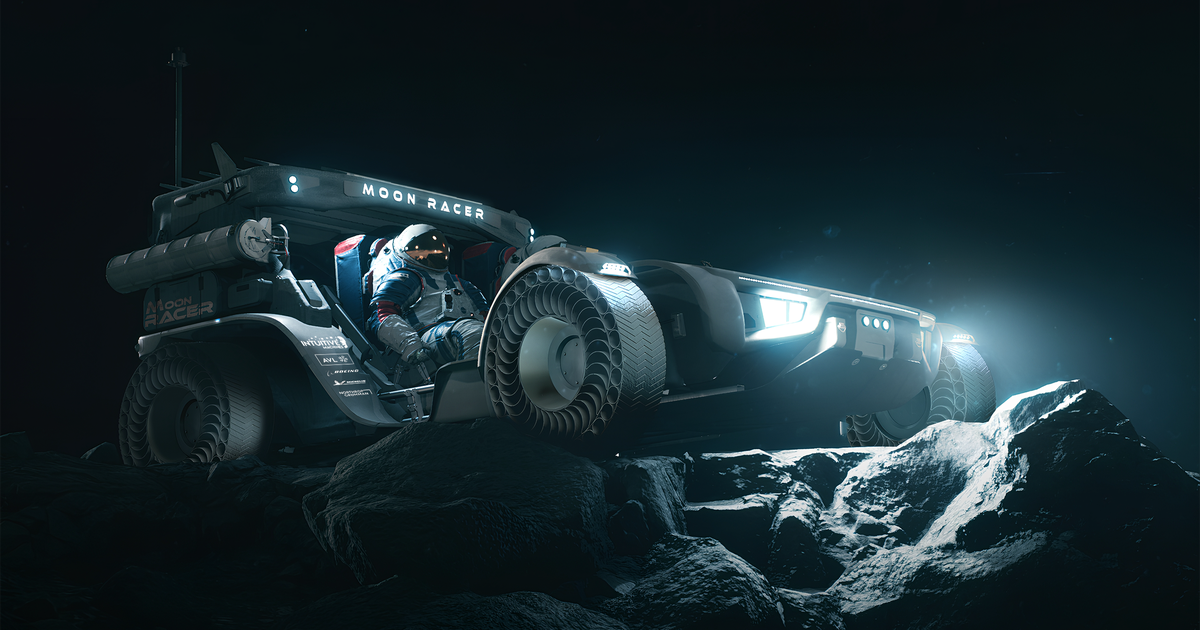I like the theory of relativity and quantum mechanics / because I don't understand them, / because they give me the feeling that space is wandering / like a swan that can't stay still, / that doesn't want to stay still or be measured;
/ because they give me the feeling that the atom is always an impulsive thing, / that it always changes its mind, "writes DH Lawrence in his poem
Relativity
.
Science and technology can sometimes seem incomprehensible to the uninitiated, but if we have learned anything from the pandemic and climate change, it is that the future of the human species is in their hands.
Doctors, microbiologists, physicists, chemists, astronomers and mathematicians show us on a daily basis that against the scientific method and rational thinking, hoaxes, tricks, para-science or bleach injections proposed by the infamous Donald Trump are not worth it (although he does not know put none when he got sick).
In his honor, we propose an amazing journey through some of the scientific milestones and their protagonists.
enlarge photo Entomological collection of the museum of the University of Oxford (United Kingdom);
Dukas Presseagentur Alamy
A toast to Rosalind
The British scientist Rosalind Franklin (1920-1958), co-discoverer of the DNA double helix with James Watson and Francis Crick, was not present on February 28, 1953 at The Eagle pub, in Cambridge (England), when her colleagues men - who referred to her as "a feminist who complained about trivialities" such as not being able to have coffee in the faculty staff room because it was reserved for men - announced the discovery of the structure of deoxyribonucleic acid, the key that it contains the necessary instructions used in the development and functioning of all living organisms, and their hereditary transmission: "We have discovered the secret of life!" they exclaimed.
With this finding, a new science was born that today encompasses almost all areas of medicine: molecular biology.
It is likely that Rosalind Franklin would have received the 1962 Nobel Prize in Medicine, along with Watson and Crick, had she not died of uterine cancer four years earlier, despite the fact that she had managed to photograph the B-side of the hydrated DNA, the famous photo 51 , key piece of the discovery.
Her place in Stockholm was taken by her head of department, Maurice Wilkins, who had betrayed her by showing, without her permission, the photo to the two Cambridge investigators who later denied her.
Today, the 50 pence coins bear his effigy, a poor and belated recognition of his merits.
In any case, the pub, open since the 14th century (and now confined by covid-19), is worth a visit, if only for how well the pints of beer pour.
enlarge photo Stromatolites on the west coast of Australia.
Franco Tollardo Getty
There is life on Earth!
The
Perseverance
vehicle
successfully landed on Mars last Thursday, February 18, in the most important mission sent to the red planet so far: to find vestiges of life in the Jezero crater, an ancient lake where conditions could exist billions of years ago. favorable.
NASA does not expect to find dinosaur or fish fossils there, but traces of archaic life such as the stromatolites discovered in Warrawoona and Yalgorup National Park (Australia), the oldest fossils on Earth: rocks that were formed more than 3.5 billion ago years by the accumulation of layers and layers of bacteria that absorb minerals on the shores of saline lakes.
enlarge photo Vostochni Cosmodrome, built in 2007 in Russia.
Yuri Smityuk Getty
"Bib, beep," said the first satellite
The Baikonur Cosmodrome, built near the town of Tiuratam, in Kazakhstan, is the oldest space launch base in the world, from the first artificial satellite -
Sputnik 1
, launched on October 4, 1957 - through the
Vostok
capsule.
with which cosmonaut Yuri Gagarin completed an orbit to Earth on April 12, 1961. Until the construction of the Vostochni cosmodrome in 2007 in Russia, all Soviet and later Russian rockets took off from Baikonur, as did most of the spacecraft. and crews sent to the International Space Station (ISS), among them the Spanish Pedro Duque, current Minister of Science and Innovation.
Visiting the complex requires a special permit;
some agencies, like the Spanish Advantour, organize trips there to see the facilities and launches.
Another landmark of space exploration: the Kennedy Space Center, the space theme park in Cape Canaveral (Florida, USA) where astronaut suits, original pieces of the space race and ships such as the shuttle
Atlantis
or one of the rockets
are exhibited
Saturn V
from the Apollo program.
The card player
Bust of Dmitry Mendeleev at Lomonosov University in Moscow.
Alamy
The Siberian chemist Dmitri Mendeleev (1834-1907) was fond of playing solitaire.
When he was appointed to the chair of chemistry at the University of Saint Petersburg in 1897, he could not find a text to his liking to teach the classes and he came up with the idea of creating a deck of cards with the symbols of the chemical elements then known (H, Li, Na, K…), with their atomic weights and properties.
He placed them in increasing order of atomic mass and discovered a periodicity: every eight letters, similar characteristics reappeared in the elements.
Thus was born the first version of the periodic table.
Mendeleev also predicted some properties of still unknown elements, which would occupy the empty spaces in his table.
His house museum is located at the University of Saint Petersburg on Vasilievsky Island.
Cosmic tsunami
The German physicist Albert Einstein predicted the existence of gravitational waves, violent disturbances of space-time that travel at the speed of light in all directions like the waves produced by a stone thrown into a pond.
When they reach Earth they are so weak that Einstein doubted they could be proven.
He was wrong.
The first observation of a gravitational wave was made on September 14, 2015 at the LIGO laser interferometry detector in Hanford (Washington, USA), a four-kilometer-long L-shaped optical facility.
It was caused by the collision of two black holes.
This wave would have traveled at the speed of light for 1.3 billion years.
On May 21, 2019, two detectors located thousands of kilometers apart, the American LIGO and the Virgo, near Pisa, in Italy, recorded the most powerful collision ever observed of two black holes, which occurred about 7,000 million years ago. years, before the formation of the solar system.
The IceCube neutrino detector in Antarctica occupies a volume of one cubic kilometer of ice with sensors reaching a depth of 2,450 meters.
Felipe Pedreros IceCube / NSF
Fishing for neutrinos
Neutrinos are mysterious and elusive particles.
Millions of them pass through our bodies and the Earth every second without leaving a trace, earning them the nickname of ghost particles.
They can only be detected in observatories built at great depth, such as the IceCube, in Antarctica, which occupies a volume of one cubic kilometer of ice with sensors that reach a depth of 2,450 meters.
It is difficult to reach it, but the photos are spectacular, as are those of the Super Kamiokande, a pool with 50,000 tons of water and thousands of photodetectors built a kilometer underground in an old mine in Japan.
enlarge photo The Enigma encryption machine, used by German submarines in World War II.
Spencer Platt Getty
Doctor Turing vs. Enigma
Next June 23 will mark the 110th anniversary of the birth of Alan Turing (1912-1954), one of the most brilliant minds of the 20th century, a mathematician and a forerunner of computers and modern computing, among many other discoveries.
His life, told in the movie
The Imitation Game
(2014), was not a bed of roses.
During World War II he was recruited by the British intelligence headquarters in Bletchley Park, near London (which now offers virtual tours and exhibits).
There, leading a team of cryptanalysts -among them, the mathematician of the University of Oxford Ann Katharine Mitchell, who died last year by covid-, managed to decipher the code of the famous Enigma machine, the secret communications system used by the German submarines, which saved thousands of lives and contributed to the Allied victory.
All this did not prevent that in 1952 he was persecuted as a homosexual by his own government and forced to undergo chemical castration.
Two years later he committed suicide by biting into an apple with cyanide (legend has it that Steve Jobs was inspired by it for the Apple logo).
In December 2013, 60 years after his death, Queen Elizabeth II officially cleared him of the charges for "indecent conduct."
Today the 50 pound notes bear his effigy.
Another pioneer of computing was Ada Lovelace (1815-1852).
This English mathematician and writer, daughter of the famous poet Lord Byron, received an unusual education for her time, with special attention to the exact sciences, where she managed to excel.
His writings already advanced ideas about current programming, including the punch cards used in the first computers of the 20th century.
Paper, pencil and a lot of talent
Many know the Higher Council for Scientific Research (CSIC), the temple of science in Spain, founded in 1939, by the series
La casa de Papel
(Netfix), where the facade of its main headquarters appears in Madrid's Serrano street, which pretends to be the building of the National Currency and Stamp Factory (FNMT) in Madrid, where it could not be filmed for security reasons.
The neighboring building of the Center for Biological Research (1951), with its graceful overhang known among CSIC workers as "the balcony of the Titanic", is the work of the architect Miguel Fisac Serna.
A building that marks the abandonment of the architecture linked to the Franco regime of its beginnings and that served to reconnect with the Modern Movement.
Other well-known places in Madrid linked to the CSIC are the Royal Botanical Garden, the National Museum of Natural Sciences and the Student Residence.
enlarge photo Homo antecessor skull found in Atapuerca.
Getty Images
Genealogy for clever monkeys
In the Sima de los Huesos, a 14-meter well at the bottom of the Cueva Mayor de Atapuerca (Burgos), more than 6,500 fossils of 28 individuals of
Homo heidelbergensis
, ancestors of Neanderthals,
have been rescued
, in addition to the remains of lions. lynxes, wolves, foxes and more than a hundred cave bears.
All of them fell to the bottom of the well, a natural trap, as they lost themselves in the caves looking for shelter or food.
Atapuerca, one of the most important sites in the world, has led to the rewriting of the remote evolution of our species, a long genealogical tree that took root 1.2 million years ago and is consumed in us,
Homo sapiens
.
The highlights of the visit are three sites: the Sima del Elefante, the Gallery and the Gran Dolina.
About 15 kilometers from the deposits of the Sierra de Atapuerca, the excursion can continue in the fascinating Museum of Human Evolution, in the center of the city of Burgos.
enlarge photo Tyrannosaurus Rex skull found in the western United States.
Jeff Chiasson
Dragon hunter
In 1818, Mary Anning (1799-1847), a neighbor of Lyme Regis, a coastal town southwest of Dorset (England), discovered the skeleton of a monster at the foot of the cliffs: it was an ichthyosaur.
His find, to which those of two complete plesiosaurs would be added, set off a veritable fever to discover the buried world that must have existed before the universal flood.
Men like the Reverend William Buckland, who tried to prove the truthfulness of the biblical portrait, or Gideon Mantell, discoverer of the first iguanodon fossils, were relegated to oblivion in the history of science by a scientist who managed to gain the merit of being the discoverer of dinosaurs: Richard Owen.
Mary Anning, considered today as the first paleontologist and whose work was fundamental for the understanding of prehistoric life, came from a humble family and being a woman she was never allowed to publish her scientific achievements.
Several geologists used his findings in their own work, but his name was never included.
The ichthyosaurs and plesiosaurs found by Anning, as well as the first iguanodon, are on display today at the National History Museum in London, as are part of the collections of specimens from the expeditions of Captain Cook and Darwin.
In the United States, the race to find more and better dinosaur fossils went even further during the
Bone Wars
,
the
Bone Wars
, the fierce rivalry they had in the Far West of the late 19th century, even going so far as to face gunfire. , the pioneers of paleontology Othniel Charles Marsh and Edwin Drinker, discoverers of more than 120 new species of dinosaurs.
enlarge photo The second most powerful particle accelerator in the world, the Tevatron, is installed at Fermilab in Batavia, near Chicago (USA).
Fermilab
Atoms with a sense of humor
What does a subatomic particle tell a duck?
"Quark, quark."
Why can't a photon make a pizza?
Because it has no mass ”.
The photon is the carrier particle for all forms of electromagnetic radiation, including gamma rays, X-rays, ultraviolet light, visible light, infrared light, microwaves or radio waves;
Its energy is given by Plank's constant and its wavelength, but its mass is zero.
Jokes about particle physics and quantum mechanics are like Schrödinger's cat: they are both funny and not funny.
In his entertaining book
The Divine Particle
, the Nobel Prize winner in Physics Leon Lederman, who was also director of the Chicago Fermilab, one of the two great centers for subatomic research, reviews the history of science, from the atom of the Greek philosopher Democritus to the Higgs boson, the elementary particle that explains why the matter in the universe has mass.
The existence of the latter was confirmed in 2012 at the Large Hadron Collider (LHC) of the European Laboratory for Particle Physics (CERN), on the outskirts of Geneva (both centers organize free tours guided by the scientists themselves).
In the history of science there are also dark milestones, such as the Manhattan Project, led by physicist Robert Oppenheimer, to make the first atomic bomb.
On July 16, 1945, the first nuclear test was successfully carried out in Los Alamos (New Mexico).
In awe of his creature, Oppenheimer recalled a few words from the
Hindu
Bhagavad-Gita
: "I have become death, the destroyer of worlds."
The star counters
Alamy
At the beginning of the 20th century, in an old office of the department of Astrophysics at Harvard University, a group of 13 women designed the celestial maps and cataloged the stars.
They called them Pickering's computers, and also the "Pickering harem."
Edward Charles Pickering (1846-1919), their boss, was the director of the Observatory and who recruited them (it was cheaper to hire women than men).
Among them were Annie Jump Cannon (1863-1941), who classified a quarter of a million stars and discovered their spectral arc, or Henrietta Leavitt (1868-1921), who invented the formula for calculating the size of the universe and the distances between stars. .
Find inspiration for your next trips on our Facebook and Twitter and Instagram or subscribe here to the El Viajero Newsletter.







